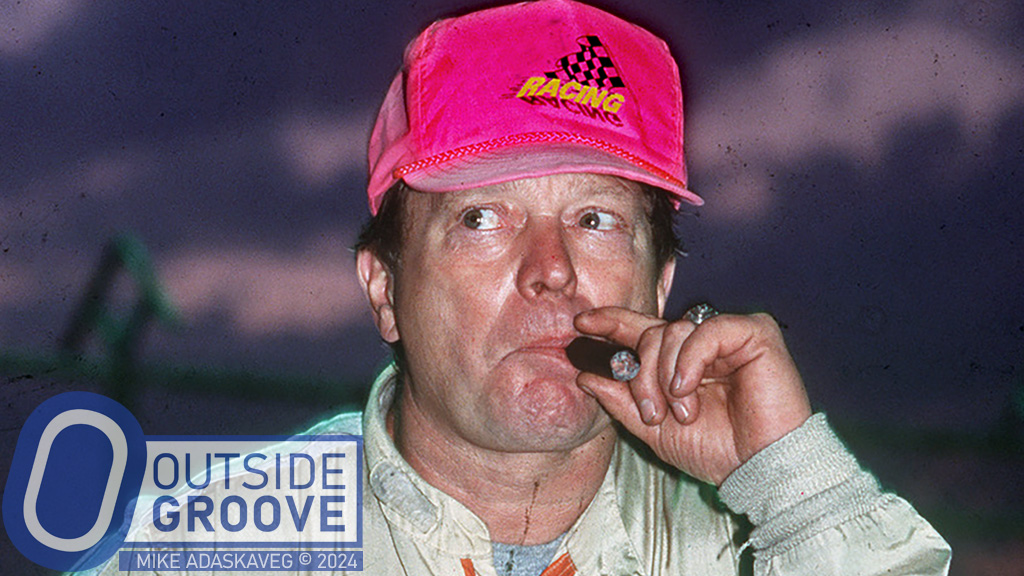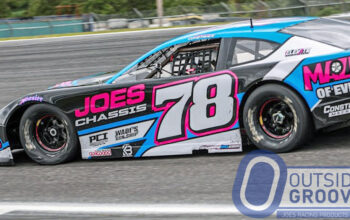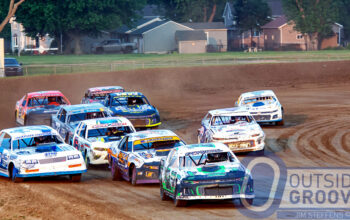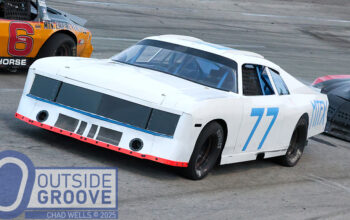One of the most colorful — and most successful — modified racers, Bugsy Stevens, passed away on May 20. Stevens most notably made his mark in the record books as a three-time NASCAR modified champion (1967-1969).
“If there was a Mount Rushmore for pavement modified drivers, he would have to be considered to be up there,” said Bones Bourcier, author of Stevens’ biography “Bugsy!: The Life and Times of Bugs Stevens.”
Many remember Stevens for driving the Ole Blue car owned by Len Boehler. With Boehler, Stevens earned the national spotlight when he won at New Jersey’s Trenton International Speedway in 1967. There, he beat Donnie Allison, who was driving the Tant-Mitchell Flying 11 modified, which was considered one of the fastest modifieds at the time.
Afterward, he won modified specials at Martinsville Speedway. In 1977, he won half of the NASCAR modified races at Stafford Motor Speedway in Connecticut. That same year he lapped the entire field, twice, in the annual fall event at Martinsville.
While is racing exploits are certainly worthy of attention, it’s often his off-track personality that made Bugsy Stevens memorable. Sometimes his antics even made it on track.
At Westboro Speedway in Massachusetts, Stevens sneaked a burlap bag into the cockpit of Joe Brady’s modified that he was driving. As the cars paraded around the lap before the feature, Stevens stopped in front of the flagstand, motioning for the starter to come down.
When they approached his car, he handed the burlap bag to the starter and said, ‘Someone left this in my car.’ The flagman opened it and two live chickens fluttered onto the track.
“A driver is usually really good or is the class clown — not both,” said Bourcier. “Good drivers are usually intense. Bugsy was a great driver, who liked to have a good time. What amazed me about Bugsy is he was what I call a ‘helmet bag guy.’ He showed up and drove. He was probably one of the best natural talents in racing that I have ever seen. He wasn’t a chassis guy — he drove what the crew gave him. He was like a jockey that jumped on a horse and won.”
Stevens, who turned 90 on May 11, recently seen contemporaries such as Bentley Warren and Ken Schrader.
“My most memorable impression of Bugsy is that I saw him, time and time again, stop what he was doing to go to the fence and greet his fans,” Bourcier said. “People loved him and he loved people. If he saw someone looking like they were down in the dumps, he’d cheer them up. His greatest joy in life was to get a laugh out of someone.”
However, it wasn’t only his peers who Bugsy Stevens made his mark on. His family, too, felt his presence.
“I grew up feeling that he was larger than life,” said his granddaughter Lea Savas. “Everyone knew my grandfather. We felt special when we were with him. He was always fun to be with.”
Mike Adaskaveg has written hundreds of stories since the website’s inception. This year marks his 54th year of covering auto racing. Adaskaveg got his start working for track photographer Lloyd Burnham at Connecticut’s Stafford Motor Speedway in 1970. Since then, he’s been a columnist, writer, and photographer, in racing and in mainstream media, for several outlets, including the Journal Inquirer, Boston Herald, Stock Car Racing, and Speedway Illustrated. Among Adaskaveg’s many awards are the 1992 Eastern Motorsport Press Association (EMPA) Ace Lane Photographer of the Year and the 2019 National Motorsports Press Association (NMPA) George Cunningham Writer of the Year.





